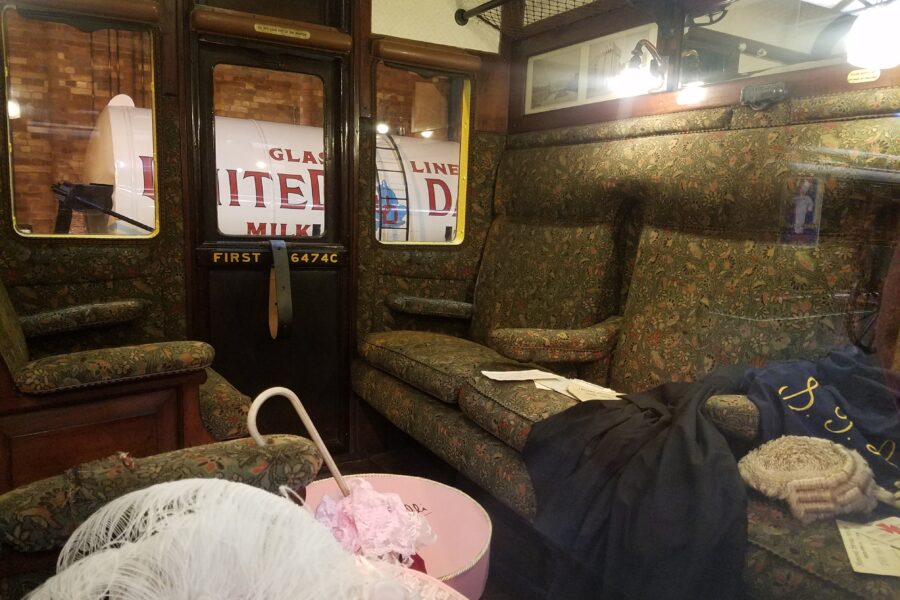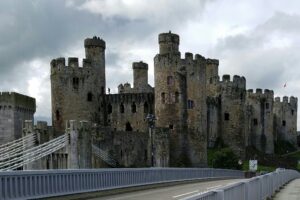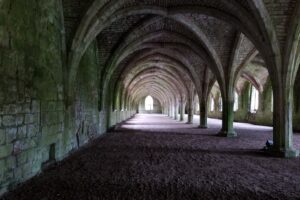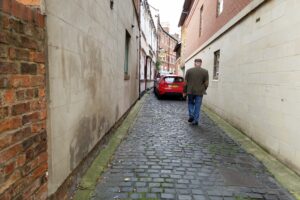Moving from the sleek 21st century super fast trains we begin with the Royal coaches of yesteryear. After peering in the carriages used by the Royal’s from Victoria to Elizabeth II I don’t think there can be other way to travel. If it were me I might just move in.

Along with all these bright shiny magnificent machines—mostly steam—the thing I love is the carefully created vignettes that try giving me a sense of how it was. The fact that the museum is in the old train depot of York, and that the trains are on tracks, makes it all pretty much an iron fairy tale. I tell Michael this is definitely a little boy’s fantasy. He reminds me that little boys are not as fascinated with trains these days. That makes me sad.

After a plowman’s lunch—unlike any that I had 20 years ago when it consisted of a slice of cheese, a pickle and bread—we continue peeking into carriage interiors and under the belly of the beast. We wind our way through a warehouse full of railway memorabilia, taking our time, trying to absorb it all, which is an impossibility.
After more than three hours of peeking and looking and reading, our feet are weary and our backs are tired. We are upstairs somewhere close to the outdoor viewing area where you can sit and watch today’s trains come and go when we stumble on a black and white documentary, filmed in the 1940’s.
We walk in almost at the beginning and sit on two small stools, our backs leaning against the wall, planning on staying only a minute or two. The film takes us through the building of a steam engine—from the beginning, step by step. If I told any of my friends how fascinated I am by the images flashing before me, I know they would look at me cross-eyed telling me I am crazy. Even when Michael taps me on the leg, signaling it is time to go, I won’t budge.
The film is a prime example of team work, hard work, artistry and pride. When the credits roll and we get up, all I can do is say, “How?” How did anyone ever figure out the design and how to make it work and all the things that were needed to build it and run it—HOW? I am in awe of the laborers that build and the geniuses that design planes, trains, automobiles, boats, computers, toasters—everything.
All I can do is cook.
While my head still spins from all the how’s, we walk to the York train station to familiarize ourselves with the layout so we won’t stumble too badly on Thursday when we board the Virgin Trains East Coast to Edinburgh. We pick up our tickets and discover that we are just going to have to stumble. At least we know how to get to the train station since we are going to have to walk. No rain on Thursday I hope.
At home Michael pulls off a miracle and gives us a semi-homemade gourmet dinner of roasted duck legs, with a little help from M&S. I can’t believe how delicious it tastes.

Climbing into bed I’m still a bit overwhelmed. I came to England for her charm and green hills and tiny villages, but what I am getting is a big dose of life and learning and history. It is possible I may never recover. Honestly my head might explode.
How to Build a Steam Engine
In an effort to discover the year the film about the building of a steam engine was made, I stumbled on the film itself. Perhaps boring to some, I think it was quite wonderful. Click on the link above if you are the tiniest bit interested.





































Leave a Reply
Your email is safe with us.